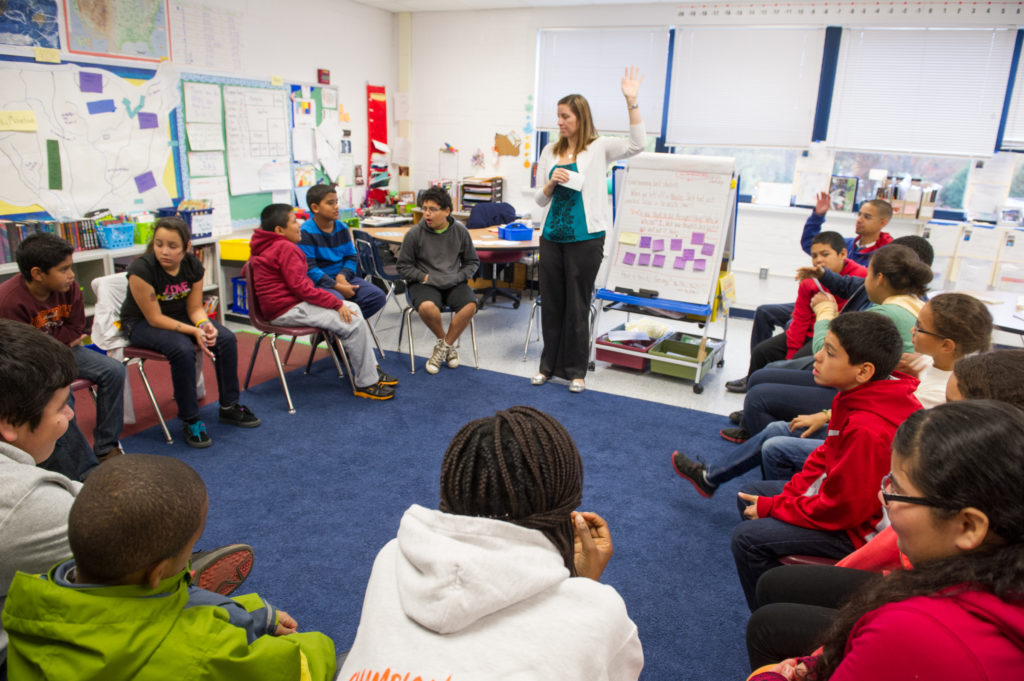
A well organized classroom can help create a calm, orderly environment in which students find academic success and take on more complex learning. Here are three ways you can make the most of your classroom space.
It was hard to do, but I let go of my teacher desk. Even though I rarely sat there, that piece of furniture signified that I was The Teacher. However, the desk took up a ton of space, and I really wasn’t using it. When I needed a place to work, I’d sit at a student table—I’d stacked so much stuff on top of my desk that I couldn’t work there!
So, as a first step I focused on keeping the top of my desk clear. Instead of piling things on it, I placed them on my bookshelf or filed them away. Next, I let students sit at the desk if they needed a quiet place to work. Sharing the space helped break its symbolic spell for me. In the end I replaced my teacher desk with a table that was smaller, easier to move, and that could be used by small groups or individuals (including me!).
Minimal storage space was the problem in my multi-age classroom, even after I rotated materials with the rest of my team and threw out everything shabby, old, or outdated.
I solved my problem by storing materials that weren’t used frequently in plastic bins underneath the classroom tables. Because the tables were big and the children’s legs were short, a bin placed under the middle of each table wasn’t in anyone’s way.
Still, before I started using this new storage strategy, I held a class meeting to talk about the change. I told the children what was in the bins, and together we decided how we’d keep them safe. This discussion satisfied the children’s curiosity about “what was under there,” and it also helped keep them from absentmindedly kicking or pushing on the bins with their feet.
It’s always been a challenge to fit twenty-six students in a meeting circle. Convinced that I just didn’t have enough space in my room, I’d always settled for an oblong shape, even though I knew that arrangement made it more difficult for everyone to see.
Then last year, a colleague shared a suggestion from a Responsive Classroom training course she’d just attended: “Establish the meeting area first. Then fit everything else into the remaining space.”
It worked! By setting the circle up first, I discovered that there really was enough room. The next step was to teach students to maintain the shape.
When they arrived on the first day, the students found their chairs already arranged in a circle in our meeting area. We started the day there with Morning Meeting. When the meeting ended, I modeled and had the students practice moving the chairs back to their desks safely. Later, we worked on going the other way and setting the circle up.
Get more tips for getting the most out of your classroom space in The First Six Weeks of School, including ideas for setting up the class for the first day of school, suggestions for how to use wall space, and tips for organizing the classroom to best support student learning.
Tina Valentine, Jean Waylonis, and Sue French contributed to this article.